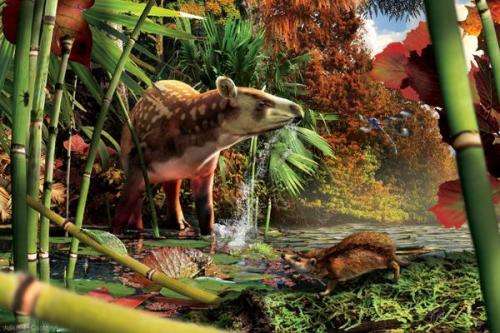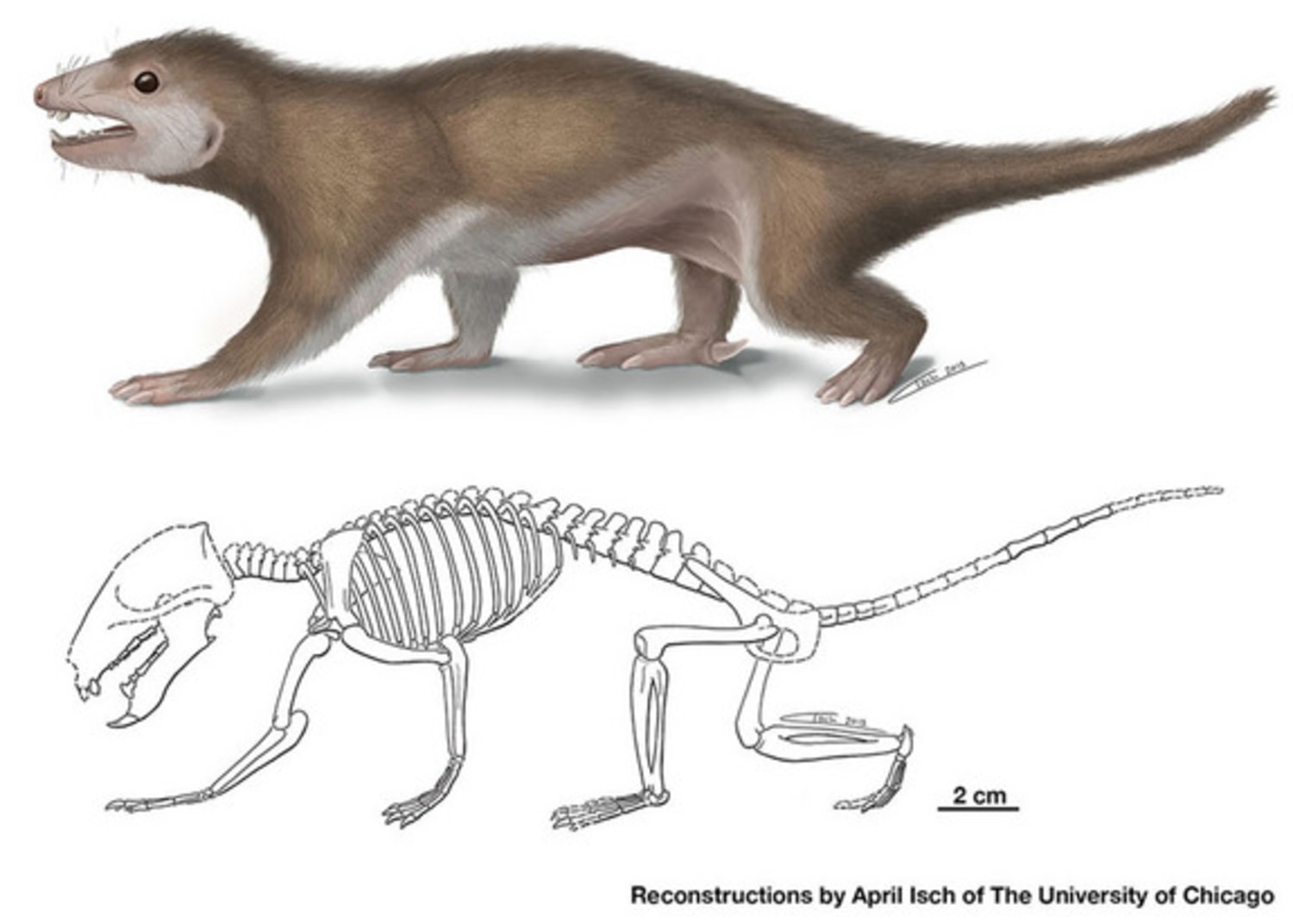Paleontologists have described a new species of giant, spineless hedgehog that lived in what is today the Gargano peninsula of Italy during the late Miocene, about 10-7 million years ago.

This is an artist’s reconstruction of Deinogalerix koenigswaldi, the largest known Deinogalerix species. Image credit: © Roman Yevseyev / Other-worlds.ucoz.ru.
From the early Oligocene to the late Miocene, the Gargano peninsula was an island home to many endemic, now-extinct animals.
Some of them were subject to insular gigantism, a phenomenon where small animals that live on isolated islands tend to grow larger because of a lack of competition and predators.

The newly discovered fossil giant, named Deinogalerix masinii, and the five previously known species of the genus Deinogalerix were hairy, rat-like relatives of modern hedgehogs and belonged to the subfamily of gymnures (moon-rats).
According to a paper published in the journal Geobios, Deinogalerix masinii is the smallest and oldest member of the genus ever found.
The largest Deinogalerix species, Deinogalerix koenigswaldi, was around 2 feet (60 cm) long and had jaws 8 inches (20 cm) long.

“Deinogalerix masinii presents more affinities in size and proportions to the previous smallest species Deinogalerix freudenthali and Deinogalerix minor,” Dr Boris Villier from the Universita degli Studi di Torino and his co-authors wrote in the paper.
“The suit of characters testified that Deinogalerix masinii is an archaic form on the evolutionary trend toward the most derived representatives of the genus.”
Deinogalerix masinii was about one and a half the size of the common hedgehog Erinaceus europaeus, around 1 to 1.5 feet (30-45 cm) long.

Fossils of Miocene hedgehogs: the newly discovered Deinogalerix masinii, Parasorex socialis and Deinogalerix koenigswaldi. Scale bar – 20 mm. Image credit: Boris Villier et al.
The animal likely had an herbivorous diet with probable occasional feeding on invertebrates and small vertebrates.
Deinogalerix masinii is named “in honor of Dr Federico Masini who was involved in the first Italian collecting campaign in Gargano and continues to work on Mikrotia faunas,” the authors wrote.
Source: sci.news





